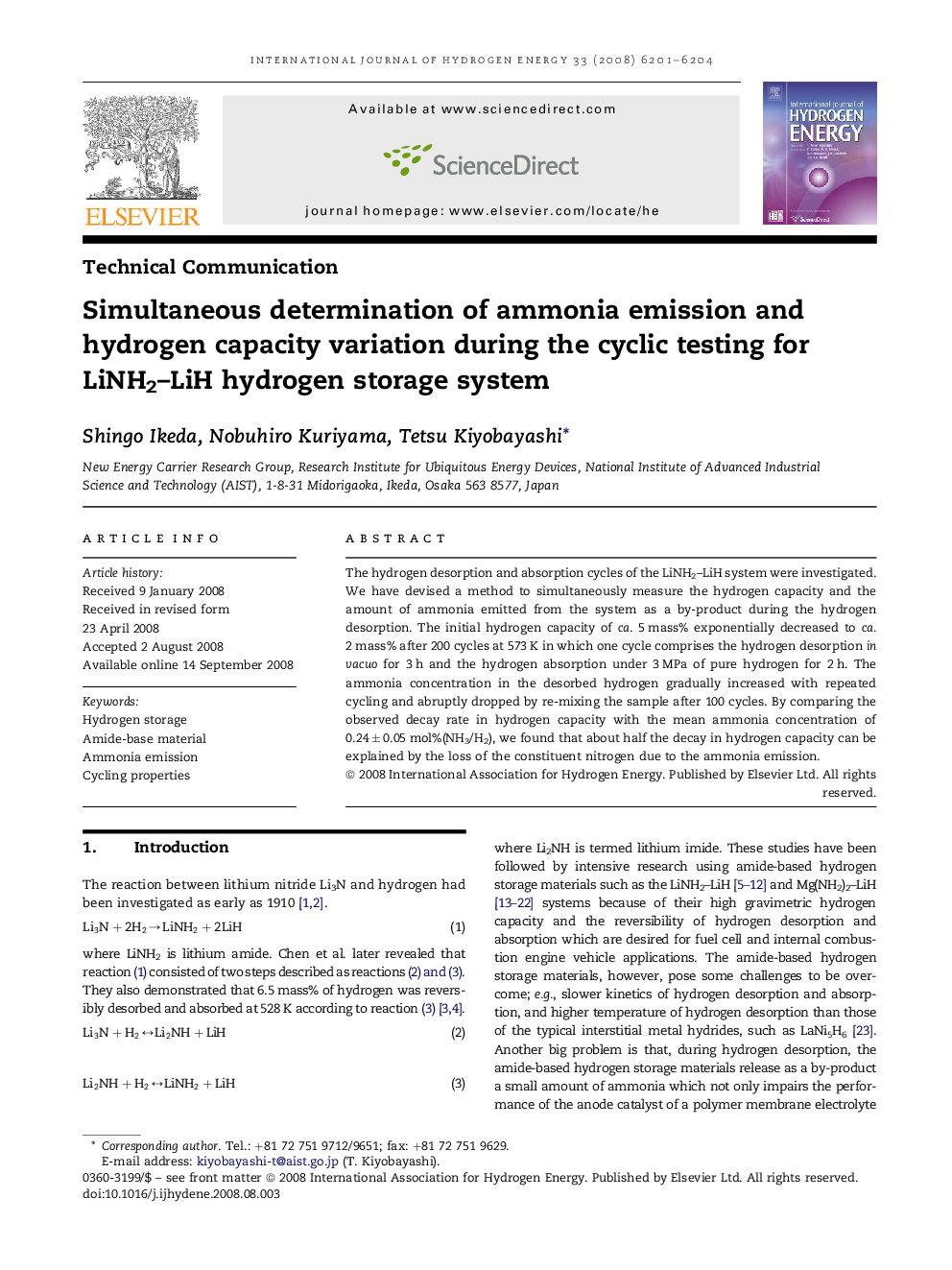| Article ID | Journal | Published Year | Pages | File Type |
|---|---|---|---|---|
| 1283621 | International Journal of Hydrogen Energy | 2008 | 4 Pages |
The hydrogen desorption and absorption cycles of the LiNH2–LiH system were investigated. We have devised a method to simultaneously measure the hydrogen capacity and the amount of ammonia emitted from the system as a by-product during the hydrogen desorption. The initial hydrogen capacity of ca. 5 mass% exponentially decreased to ca. 2 mass% after 200 cycles at 573 K in which one cycle comprises the hydrogen desorption in vacuo for 3 h and the hydrogen absorption under 3 MPa of pure hydrogen for 2 h. The ammonia concentration in the desorbed hydrogen gradually increased with repeated cycling and abruptly dropped by re-mixing the sample after 100 cycles. By comparing the observed decay rate in hydrogen capacity with the mean ammonia concentration of 0.24 ± 0.05 mol%(NH3/H2), we found that about half the decay in hydrogen capacity can be explained by the loss of the constituent nitrogen due to the ammonia emission.
